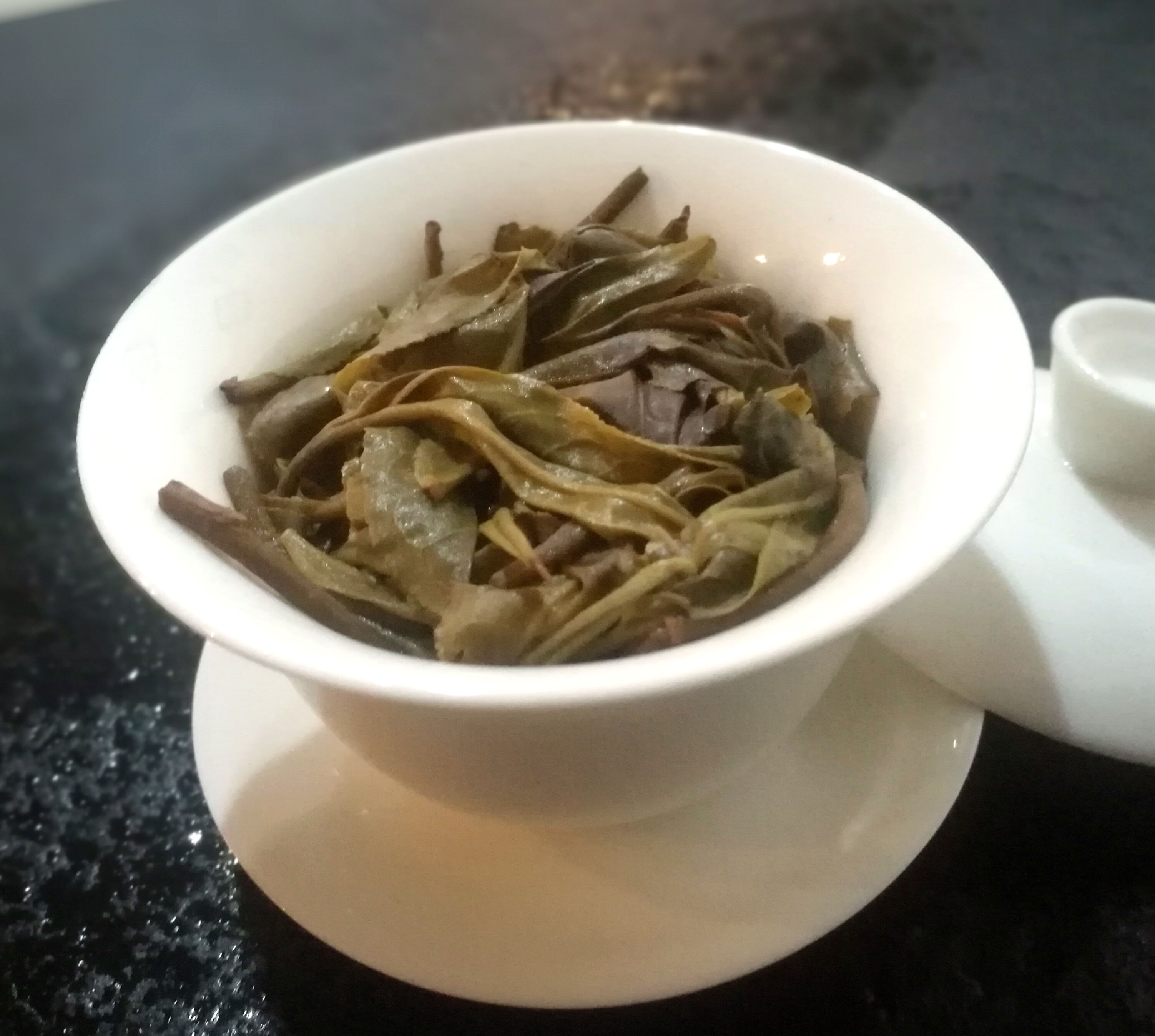I don’t recall, a decade or so ago anyone much thought of picking tea from single trees. ‘单株/dan zhu’. It’s a thing that started in the last few years. Perhaps as Puer tea has become more expensive and as tea drinkers have been exploring the world of Puer more deeply. I guess it’s also a marketing thing: selling exclusivity. But since every ancient tea tree is unique, there is some logic to it also: even trees in the same tea garden can be quite different. Sometimes there can be a number of sub-varieties or forms of sinensis assamica growing next to each other: one more bitter, another sweeter. It’s done with larger, older trees where a single tree might only flush once a year in Spring, and may typically yield say five to ten kilos of fresh tea, which might produce a couple of kilos at most of maocha.
A few weeks back a tea farmer friend took me to see a tea tree which is clearly quite old: the girth at the base is probably getting on for 100cm and the trees branches cover an area of at least 10㎡, helped by the fact that it must have been polarded a long time ago. Let’s say it’s six to eight hundred years old, judging by other trees in the vicinity that are of known age.
‘Have you drunk tea from this tree?’ I asked. He hadn’t, but a few days later he called me up. ‘I’ve got some.’ he said. ‘Some what?’ I asked. ‘Some tea from that tree.’
I was busy and It was nearly a month before I managed to get round to visiting him. When I did I was expecting the tea to be long gone, but he’d kept it.
The fragrance is excellent, with floral qualities and a hint of something I can’t put my finger on – vaguely citrus. The broth is rather fine, certainly compared to ‘da zhong huo‘ from the area. It has a very slight bitterness and good ‘hou yun’. The broth is clear and a little viscous. Apart from a very slight feeling on the tip of the tongue, which is frankly not enough to detract from its attributes, its really a very nice tea. I brought a handfull back to drink with some friends who at first thought it was a Xiang Ming xiao ye zhong tea. Not at all like the Menghai tea that it is.
The processing looks like it was pretty good. Very even and no red stems.


